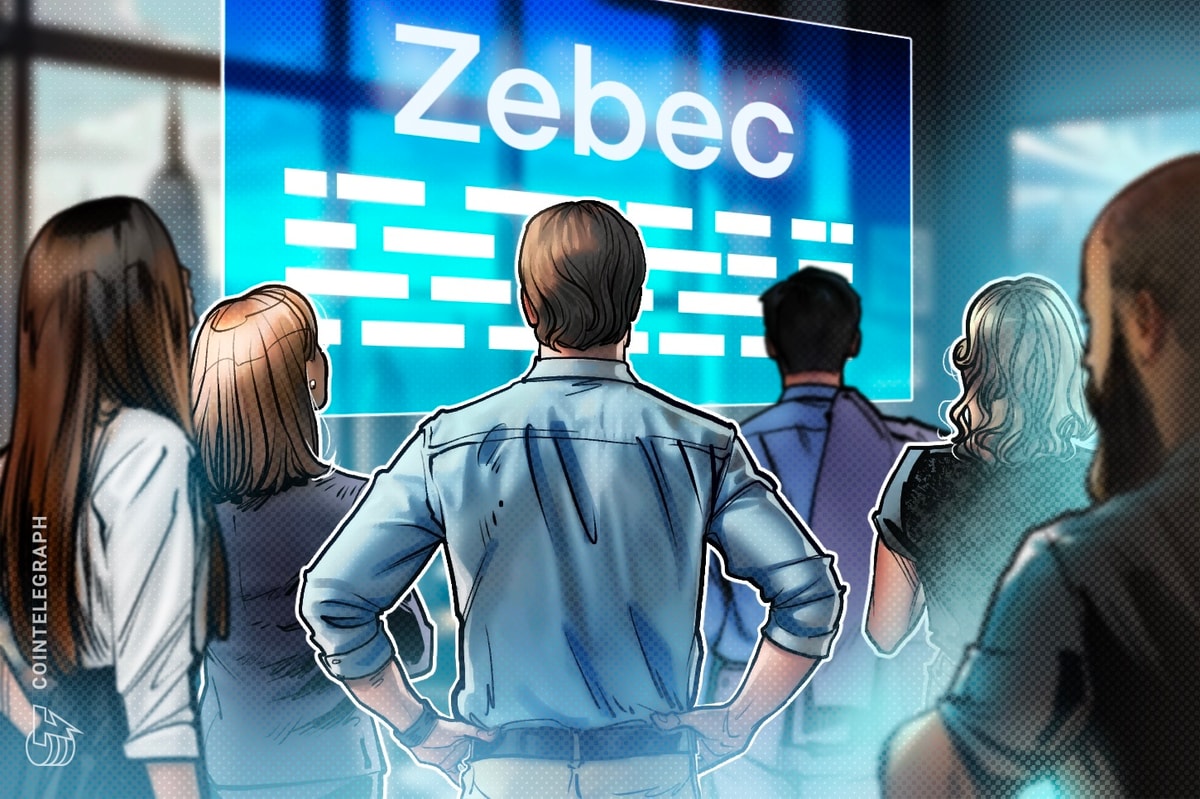If you’ve watched Netflix’s new sci-fi series 3 Body Problem (and you should, it’s excellent!) based on the novel by Liu Cixin, you probably wondered about the amazing virtual world that’s a key part of the story. Without spoiling anything, a mysterious alien species communicates with humanity through a multi-user virtual experience with seemingly sentient NPCs and a constantly changing world, conveyed in full sensory VR. (Watch a preview clip above.)
But when can us humans make something like that? I asked a number of top virtual world/VR experts, including Philip Rosedale, Raph Koster, VR pioneer Nonny de la Peña, and Sine Wave CTO Adam Frisby. Their aggregate answer: Both sooner and later than you might think!
“I think we aren’t too far from sentient beings in virtual worlds,” Philip Rosedale tells me. “AIs that are very interesting to interact with and living in virtual worlds will happen very soon… next few years. We have a lot of compute coming available, and that is the only thing blocking.”
However, he’s skeptical we’re close to full sensory VR technology:
“I think it may never be possible, because the ability to directly stimulate the brain (as compared to reading it, which may be easier) may never be possible, even with invasive devices like stents or brain surgery.”
And no, he doesn’t think something like Elon Musk’s Neuralink is necessarily a first step to that:
“It is unclear how many tiny wires you’d have to stick into your brain and whether you could learn to use them and whether they would change or stop working over time,” Philip argues. “Also note that in those cases where it does work (like the paralyzed guy) the subjects have to slowly learn how to control things — neuroplasticity. This is very different than stimulating a brain in a way that virtualizes sensory input. Making you ‘see’ your mom standing in front of you — no one knows how to do that, no matter how many wires are stuck in your neocortex.”
Raph Koster, who’s developing Playable Worlds, a new metaverse platform, had a similar reaction around the 3 Body headset:
“I mean, how is that thing even powered? We definitely don’t have direct brain stimulation for sensation.”
He does think the graphics fidelity is possible soon: “We can make the photoreal imagery. The headset rendering is going to take a while before we can get the illusion of reality. Hardware challenges with the displays.”
So his final scorecard:
“Sooner than people think: Worlds that can change and collapse.
“Years: Hyperreal rendering, sentient seeming NPCs that hold up for more than a few minutes.
“Unknown time: Batteries, full sensory support.”
Adam Frisby estimates it will take 15 years to get something like the virtual world with sentient AI aspect: “Sensory VR part maybe longer. We don’t have much of a pathway to taste and smell at the moment, though I think Neuralink is restoring sight in apes, so ???”
Nonny de la Peña is actively helping develop similar technology now: “We are working on a haptics for Storytelling Lab. We have been investigating a number of different options from suits to gloves to environmental sensors.”
As for how many years for when we get something like the virtual world made by aliens: “Hopefully less than 400!” (Which if you know, you know.)
For my part, I’d say it’s less about the technology than social adaptation. Since the install base for high quality VR remains so small, and doesn’t grow substantially even as the tech improves, there’s no reason to think there’s a large market for the full VR technology we see in the TV series. (As opposed to being an important but pricey niche for people with, say, physical disabilities.) So that seems over a hundred years away at least.
As for the virtual world/NPC aspect, I agree with Adam that’s probably 15 years out. We probably won’t use it to save an alien species, though we will have a more enjoyable time playing Grand Theft Auto VII.
Please support posts like these by buying Making a Metaverse That Matters!
Read More: nwn.blogs.com








 Bitcoin
Bitcoin  Ethereum
Ethereum  Tether
Tether  XRP
XRP  Solana
Solana  USDC
USDC  TRON
TRON  Dogecoin
Dogecoin  Cardano
Cardano  Lido Staked Ether
Lido Staked Ether  Wrapped Bitcoin
Wrapped Bitcoin  Hyperliquid
Hyperliquid  Wrapped stETH
Wrapped stETH  Sui
Sui  Chainlink
Chainlink  Stellar
Stellar  LEO Token
LEO Token  Avalanche
Avalanche  Bitcoin Cash
Bitcoin Cash  Toncoin
Toncoin  Shiba Inu
Shiba Inu  USDS
USDS  Hedera
Hedera  WETH
WETH  Litecoin
Litecoin  Wrapped eETH
Wrapped eETH  Binance Bridged USDT (BNB Smart Chain)
Binance Bridged USDT (BNB Smart Chain)  Polkadot
Polkadot  Monero
Monero  Ethena USDe
Ethena USDe  Bitget Token
Bitget Token  Pi Network
Pi Network  Pepe
Pepe  Coinbase Wrapped BTC
Coinbase Wrapped BTC  WhiteBIT Coin
WhiteBIT Coin  Aave
Aave  Uniswap
Uniswap  Dai
Dai  Ethena Staked USDe
Ethena Staked USDe  Bittensor
Bittensor  OKB
OKB  Cronos
Cronos  BlackRock USD Institutional Digital Liquidity Fund
BlackRock USD Institutional Digital Liquidity Fund  Aptos
Aptos  NEAR Protocol
NEAR Protocol  Jito Staked SOL
Jito Staked SOL  Internet Computer
Internet Computer  sUSDS
sUSDS  Ethereum Classic
Ethereum Classic